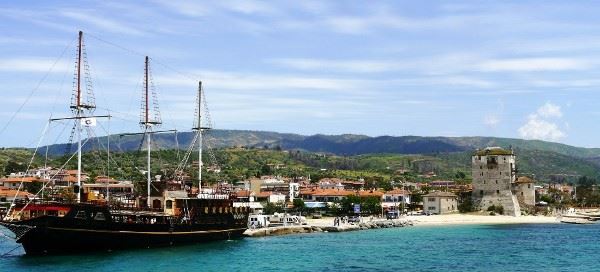2016 will mark 2400 years since the birth of one of Greece’s most famous sons. Aristotle was born in 384BC in the ancient city of Stagira, now an archaeological site just outside the modern seaside village of Olymbiada. He developed his philosophical and scientific interests as a student of Plato in Athens, before being asked by Philip of Macedon to tutor his son, the man who would be forever known as Alexander the Great. Aristotle is best known for his belief in empirical principles: that everyone’s knowledge is based on how they perceive the world around them. He also contributed ideas to physiology, zoology and mechanics, some of which would not be seriously challenged for over 2000 years.
While the ideas of Aristotle survived intact, the same could not be said of any physical legacy of the great man. The location of his tomb has been the subject of particularly fierce debate over the years. According to Aristotle’s will, he is said to have requested that “wherever they put my tomb, they should collect and place the bones of Pythias (his wife), as she herself requested”. The American archaeologist Charles Walston claimed to have found Aristotle’s tomb in 1889 while working on a dig at the site of the ancient city of Plataea in southern Greece. The tomb contained a pen, some jewellery and what he claimed was parts of the skeleton of Aristotle. While he was adamant about his findings, his view is not widely shared among modern archaeologists.
Indeed the people of Haldikiki widely believe that Aristotle’s body was transferred to his home town soon after his death, and that his remains lie close to the ruins of ancient Stagira. Take a walk around the forested hills of this corner of Halkidiki and you will find plenty of clues relating the region’s rich history. This was a critical strategic point during the famous battles between the Greeks and the Persians, and there are a number of walking trails in the surrounding area which have been developed around these historical themes. Some local historians believe they know the real location of Aristotle’s tomb; you can plan a walk which takes in the site. Regardless of whether you choose to believe the legends of the whereabouts of Aristotle, you’ll be guaranteed a memorable walk in a stunning natural landscape.
There will be many events taking place in 2016, both in Greece and further afield, which will celebrate the enormous contribution that Aristotle has made to modern-day science and philosophy. But in the pretty corner of Greece where his story began, the centenary will be marked by a characteristic, understated pride in their famous local philosopher.
The region around Olymbiada offers plenty of attractions beyond the ancient city of Stagira, with cycling, bird watching and even cookery classes available.



